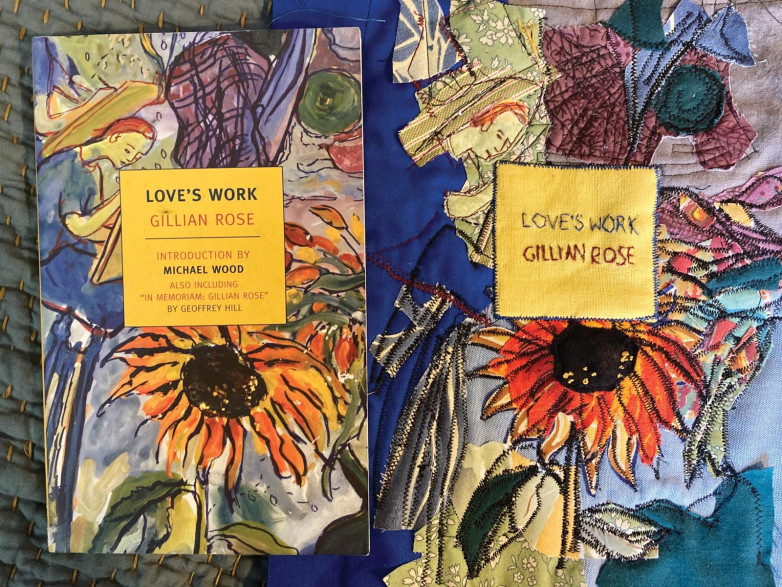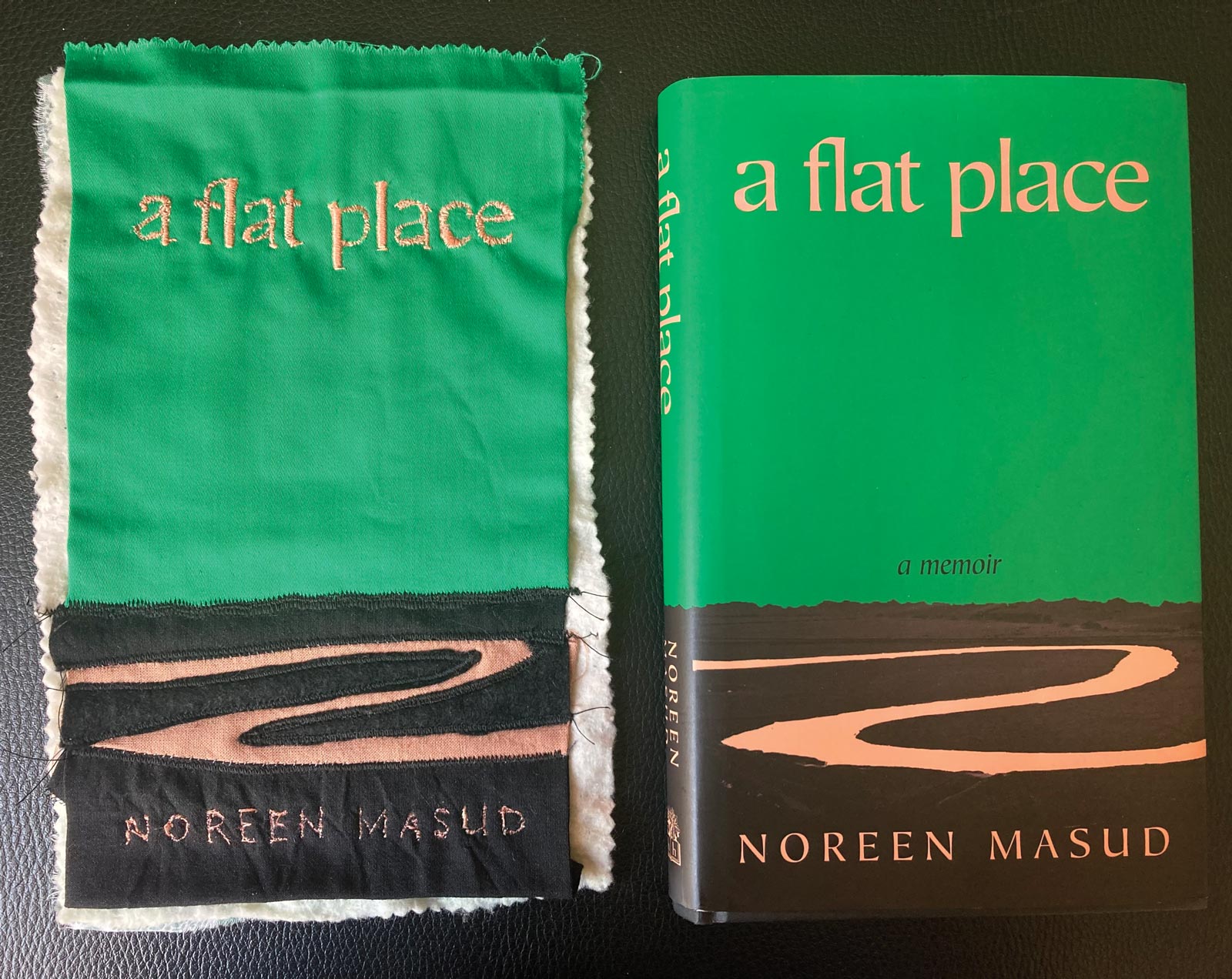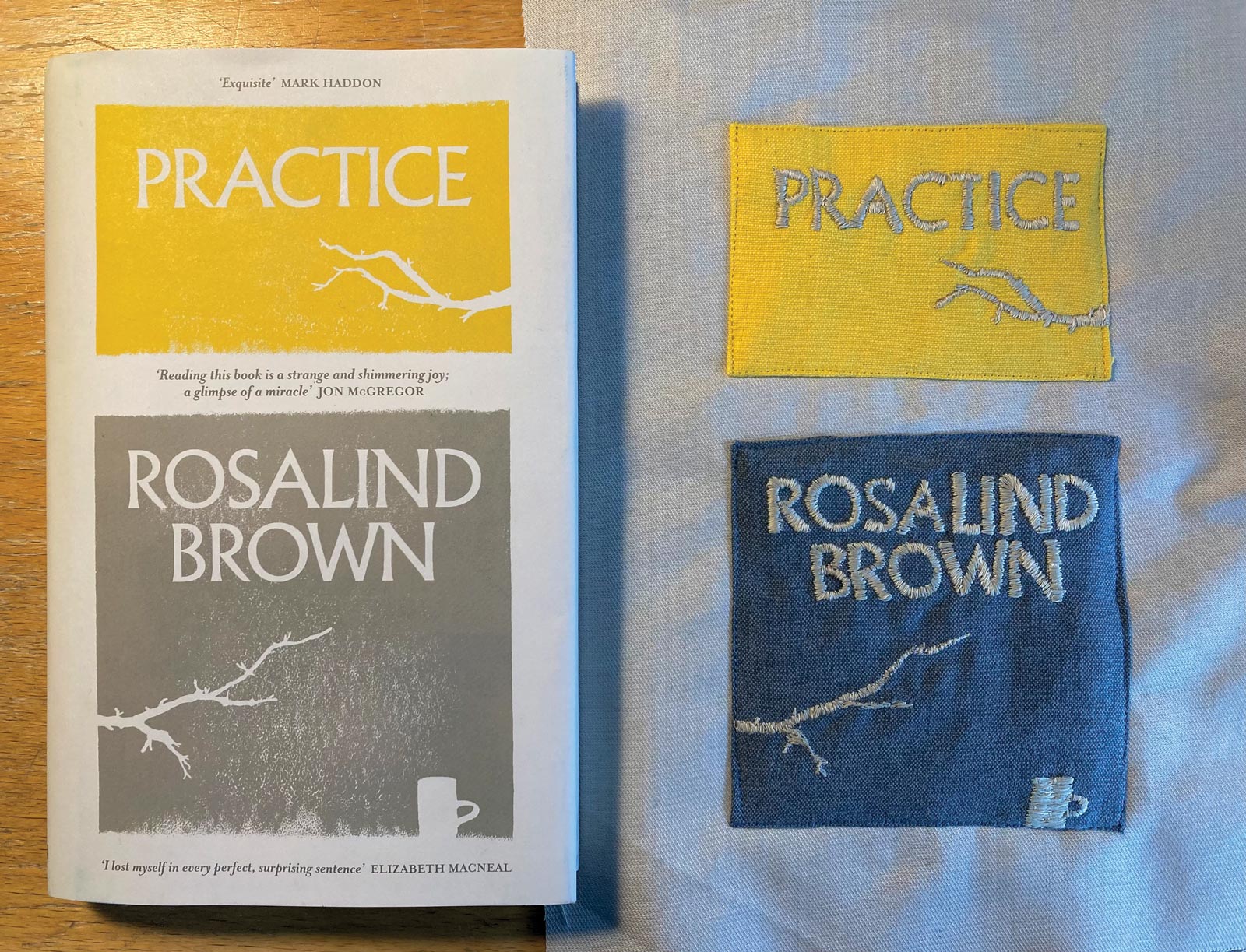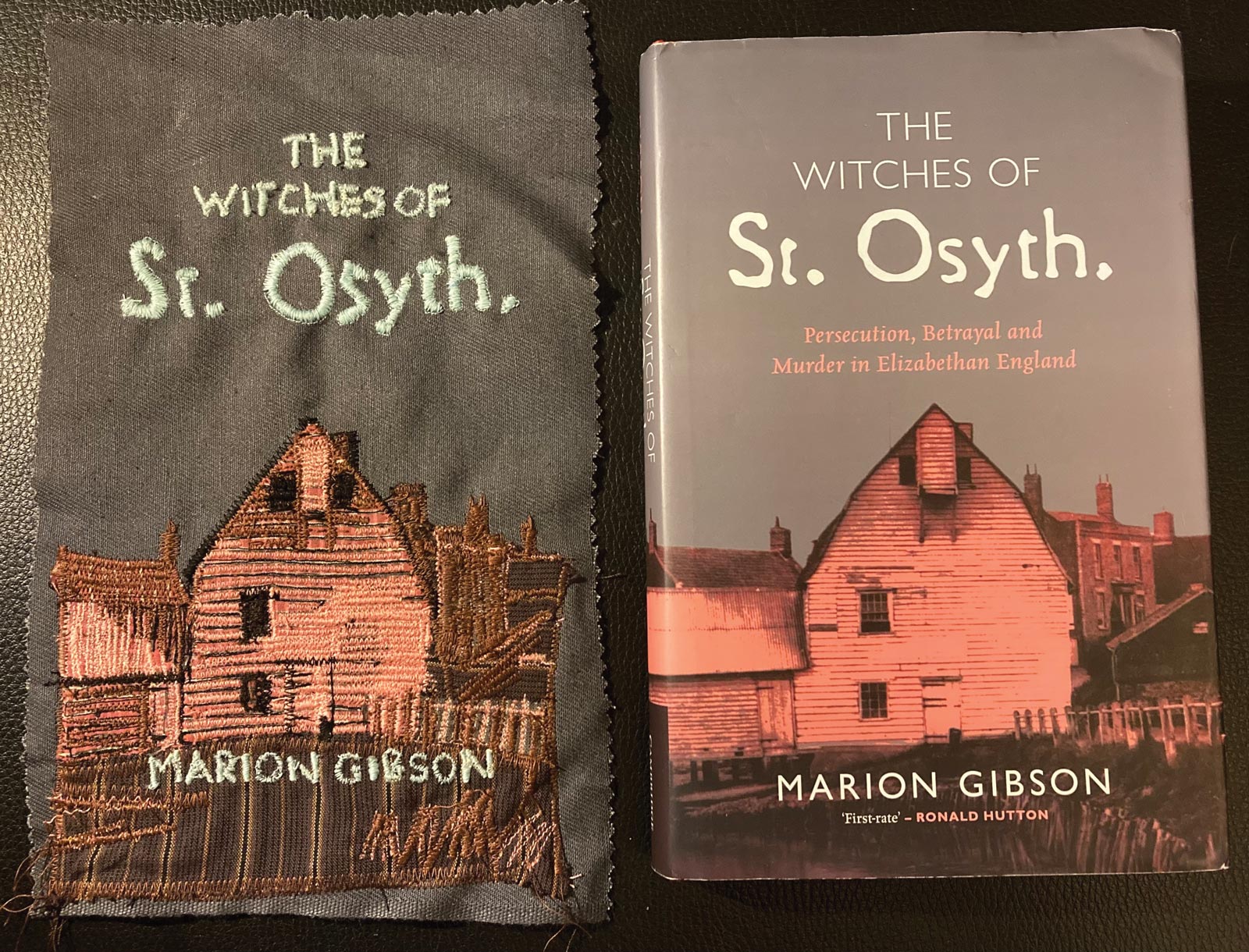“I set myself the challenge of embroidering the cover designs, with the motivating aim of eventually being able to wrap myself in pleasant bookish memories in the form of a double quilt,” she said. “At the time, I was reading Noreen Masud’s A Flat Place, and that inspired me to try to extend the ways I think about books I read, making them more tactile experiences.”
Since then, Cockayne has created fabric versions of the covers of every book she finishes and enjoys, mostly nonfiction titles, but she has plans to up the fiction numbers. (She shares her progress on X/Twitter, where she is @Rummage_work.) She is currently on her twelfth cover—All That She Carried: The Journey of Ashley’s Sack, a Black Family Keepsake by Tiya Miles—and estimates that she will need between sixty-six and seventy-two pieces before she can stitch them all together.
Most of the book cover pieces combine patchwork and hand embroidery, with machined additions. If she feels the book demands some quiet reflection, she handsews more of the cover. All of Rosalind Brown’s Practice, for instance, was handsewn because the book itself made her think about sitting quietly, doing things while thinking, and the processes of making things.
“My favorite covers are those for Gillian Rose’s Love’s Work and Marion Gibson’s The Witches of St. Osyth, the former for the joyous, colorful exuberance and the latter for the vibrancy of the pink juxtaposed against the dark grays,” she said. “I fear that I might start to select books I will read in the future by the look of the cover and that I am more inclined to read books now that have attractive or challenging cover designs. I have also tried to think about each book as I embroider it, a kind of extended process of reflection, sewing myself back into the stories.”




















